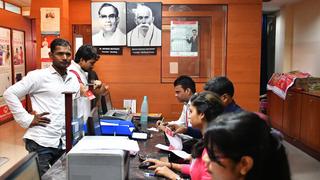The Reserve Bank of India (RBI) always wants the entities regulated by it to play with a straight bat. So when the entities try to push the boundaries of regulation, they tend to get into trouble.
This is what the senior officials of some banks, especially old-generation private sector banks, realised during the recent annual financial inspection of their books as their priority sector lending (PSL) portfolio came under the regulator’s lens with regard to the classification of loans up to ₹1.6 lakh as PSL.
The RBI’s inspection team dug a little deeper into the PSL books for the FY24 period, according to a senior banker.
During the supervisory assessment of some banks, the central bank inspectors are believed to have come across instances of irregular classification of agriculture loans of up to ₹1.6 lakh.
Apparently, what raised the hackles of RBI’s inspectors is the fact that while agriculture loans up to the ₹1.6 lakh limit are mandated to be collateral-free, some banks had taken gold from small and marginal farmers as collateral.
Bankers say that if collateral such as gold is used as security, then agriculture loans of up to ₹1.6 lakh cannot be classified as PSL.
They worry that if the regulator puts its foot down, which is more likely than not, on the classification, then some of these banks could find themselves in a tight corner.
If such loans lose the PSL tag, then the banks will have to scramble to buy PSL certificates or invest in the National Bank for Agriculture and Rural Development’s (NABARD) Rural Infrastructure Fund (which pays low interest) to make up for the shortfall on this front.
Mandated lending
PSL is mandated lending, which is aimed at increasing a bank’s flow of credit to priority sectors such as agriculture, micro, small and medium enterprises (MSME), export credit, education, housing, social infrastructure, renewable energy and the weaker sections, among others.
The target for domestic scheduled commercial banks (SCBs) for lending to priority sector is 40 per cent of the adjusted net bank credit (ANBC), or credit equivalent of off-balance sheet exposure (CEOBE), whichever is higher.
Since small and marginal farmers (SMFs), who constitute more than 80 per cent of total farmer households in the country, face exclusion from the formal financial channels, the MV Nair Committee on priority sector lending had, in 2012, recommended a sub-target for this group.
Small farmers have landholding of more than 1 hectare and up to 2 hectares. Marginal farmers have up to 1 hectare. SMFs include landless agricultural labourers, tenant farmers, oral lessees and share-croppers.
Of the overall PSL target, the agriculture portfolio — including farm credit (agriculture and allied activities), and lending for agriculture infrastructure and ancillary activities — should comprise 18 per cent of ANBC or CEOBE, whichever is higher. Of this, a target of 10 per cent has been prescribed for SMFs.
Hike in limit
In February 2019, the RBI raised the limit for collateral-free agricultural loans from ₹1 lakh to ₹1.6 lakh, in view of the overall inflation and the rise in agriculture input cost over the years since 2010.
How does collateral-free agriculture loan work? To use an example, the scale of finance fixed by the State-level technical committee, under the aegis of NABARD, for the Rabi onion crop in Maharashtra ranged from a minimum of ₹62,833 per hectare to ₹95,156 per hectare for FY23.
So, by this yardstick, a small farmer owning, say, 1.5 hectares could get a collateral-free loan ranging from a minimum of ₹94,249.5 to a maximum of ₹1,42,734.
Private vs public banks
Bankers say private sector banks do not have the expertise that public sector banks have in lending to the agriculture sector, including collateral-free lending to SMFs. So, a collateral such as gold gives them comfort.
While collateral such as gold is kosher for agriculture loans above ₹1.6 lakh, it is not for loans below this amount, going by RBI stipulation.
So, banks that fall foul of this regulatory prescription had better watch out. The regulator is keeping an eye on their every move.
An email sent to RBI, seeking its comments on the reported scrutiny of collateral-free agriculture loans, remained unanswered until going to press.
Whenever the Central bank comes across regulatory transgression, it first asks the entity to take corrective steps to remedy the situation. If this does not work, the entity will be called out, and fines or business restrictions will kick in until they comply.
All in all, the message to regulated entities is that a rule is a rule. Even if it pertains to only the PSL classification of small-value collateral-free agriculture loans, it has to be complied with in letter and spirit.
Nothing escapes the regulator’s attention.







Comments
Comments have to be in English, and in full sentences. They cannot be abusive or personal. Please abide by our community guidelines for posting your comments.
We have migrated to a new commenting platform. If you are already a registered user of TheHindu Businessline and logged in, you may continue to engage with our articles. If you do not have an account please register and login to post comments. Users can access their older comments by logging into their accounts on Vuukle.